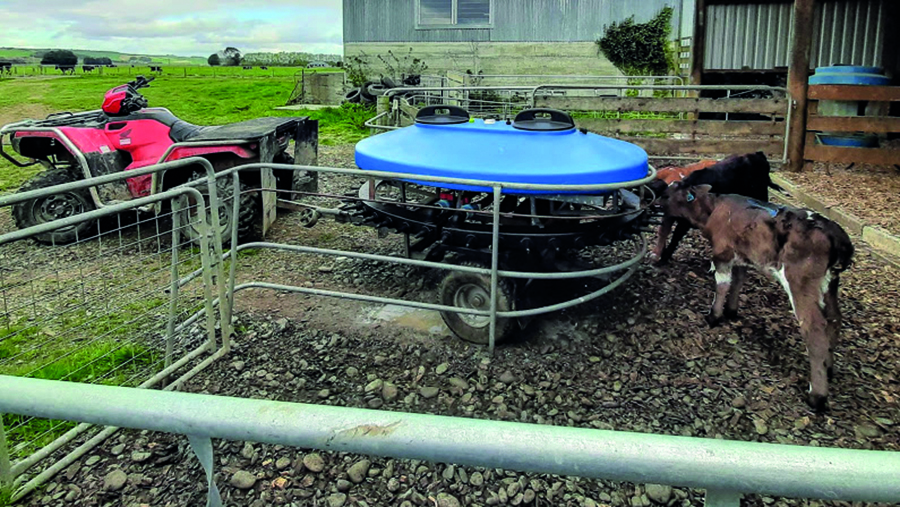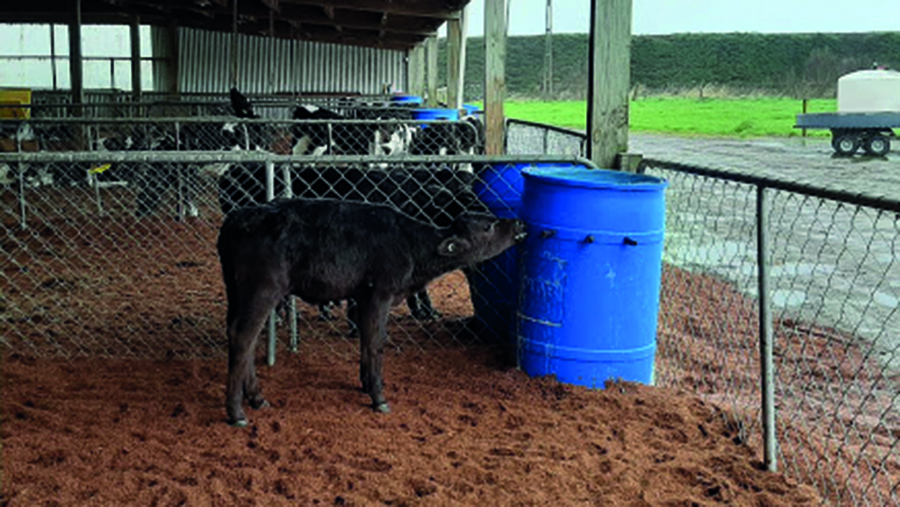
[ad_1]
Feeding a skim milk-based replacer to support calf health and encourage dry feed intakes and rumen development can help UK dairy farmers reduce antibiotic usage and mortalities as they scale up cow numbers.
As herd sizes grow, the disease load can be high but a solution to promoting calf health is to choose the right type of calf milk replacer (CMR).
A New Zealand trial studied how calves under two weeks old and exposed to natural infection reacted when they were fed CMRs formulated from skim, whey and whey and plant protein. The latter two were very much European type whey based powders.
Antibiotic use and mortality in the skim milk-fed group was 75% lower than in those offered the whey and plant protein formulation.
A finding by the researchers was that herd size and block calving create greater challenges to animal health, a reason why skim-based milk replacers are preferred in New Zealand.

Selina Field, of Bonanza Calf Nutrition, says this has resonance for UK dairy farms.
“Herd sizes in the UK are getting bigger every year and many male calves have to be kept on farm for longer. These factors, together with the general nature of calving, also increases the workload and the disease load on UK farms compared to those in Europe,’’ she explains.
Using a skim-based milk made with low heat skim milk powder for young calves will cost £5-£6 a calf extra compared to some cheaper whey and plant protein formulations but with reduced disease and work associated with treating sick calves it is money well spent.
Skim milk contains all the casein protein found in milk and, when used in a milk replacer, it slowly releases its nutrients throughout the day.
Analysis of numerous studies into milk feeding rates have also concluded that calf weight at weaning, as distinct from growth rate, is central to future performance; dry feed intake at weaning also plays a key role.
The overall conclusion is that calf birthweight, colostrum intake and health and dry feed intake at weaning are the areas farmers should focus on.
Feeding high levels of energy in the form of fat – in excess of 170g/day – in milk replacer will increase costs and weaning age while at the same time will reduce dry feed intake.
The UK feed industry produces very good calf feeds to stimulate rumen development and performance before and after weaning but this point is often overlooked in calf rearing, says Selina.
This is why limiting fat intake and feeding a good skim or whey based milk replacer to keep calves healthy and encourage dry feed intake and rumen development is the only way to guarantee performance and longevity, Selina points out.

In once-a-day CMR feeding systems, using a skim-based product is important as the nutrition will be slowly released throughout the day compared to whey which leaves the stomach within an hour.
Regardless of milk intake, maximising dry feed intake in calves relies on the provision of fresh clean water as the water fraction in milk cannot enter the rumen and the rumen bugs need water to ferment the dry feed materials.
Failing to provide water will reduce feed intake and performance before and after weaning by 40%, says Selina.
Effect of CMR type on calves artificially infected with Salmonella infected |
||||
|
CMR type |
Treated with |
Removed to |
Died |
|
|
Healthy |
Antibiotics |
Sick pen |
||
|
|
||||
|
Skim Milk |
67 |
10 |
2 |
1 |
|
Whey Protein |
49 |
25 |
3 |
4 |
|
Whey and Soya protein |
37 |
44 |
7 |
4 |
|
p value |
0.001 |
0.001 |
0.16 |
0.35 |
| Source: NZ Journal of Animal Science Vol 78 2018 p157-160). See the full trial (PDF) | ||||
Effect of CMR type on calf performance to 13 weeks |
||||
|
CMR type |
Skim |
Whey protein |
Whey and Soya protein |
P value |
|
Initial Wt |
41.9 |
41.2 |
41.1 |
|
|
5 week wt |
61.2 |
59.3 |
58 |
0.14 |
|
10 week wt |
86.5 |
84.2 |
79.4 |
0.01 |
|
13 week wt |
101.8 |
99.2 |
92.4 |
0.001 |
|
Number of calves not weaned at 42 days |
3 |
3 |
11 |
– |
|
Wt gain 0-13 weeks |
626 |
602 |
530 |
0.004 |
| Source: NZ Journal of Animal Science Vol 78 2018 p157-160 | ||||
For more information go to bonanzacalf.ie or freephone 0808 1781017
Skim milk-based replacers could aid calf health on UK dairy farms
[ad_2]
Source link